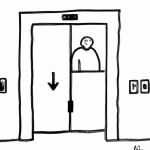The simple daily habit that will relieve your back pain and improve your health
Discover the daily habit that alleviates back pain and improves your mental and cardiovascular health. Incorporate this activity and transform your well-being!...
Table of Contents
- A Simple Solution for Lower Back Pain
- Walking: An Exercise with Multiple Benefits
- Benefits Beyond the Spine
- Practical Tips for an Effective Walk
Follow Patricia Alegsa on Pinterest!
A Simple Solution for Lower Back Pain
Back pain is an ailment that affects millions of people around the world and ranks as one of the leading causes of disability. Those who suffer from it often face relapses, even after experiencing an apparent recovery.
However, a recent study has revealed a surprisingly simple and accessible remedy: walking. This activity, incorporated into the daily routine of many people, could be key to reducing the chances of back pain reappearing.
Researchers in Australia have discovered that regular walking not only alleviates back pain but also prevents its recurrence. According to the study published in The Lancet, those who walked five times a week saw a 28% reduction in the recurrence of lower back pain.
Walking: An Exercise with Multiple Benefits
Researchers in Australia have discovered that regular walking not only alleviates back pain but also prevents its recurrence. According to the study published in The Lancet, those who walked five times a week saw a 28% reduction in the recurrence of lower back pain.
This finding is encouraging for those seeking economical and simple alternatives to traditional treatments. Walking stimulates blood flow to the spine, improving healing and strengthening the structures that support the back.
The gentle movement involved in walking exerts a light and repetitive load on the spine, maintaining the health of the cartilage discs and the muscles surrounding the lower back.
The gentle movement involved in walking exerts a light and repetitive load on the spine, maintaining the health of the cartilage discs and the muscles surrounding the lower back.
This exercise increases the flow of oxygen and nutrients to the tissues, promoting their regeneration. Additionally, it helps counteract the fear of movement that many people develop after recovering from an episode of lower back pain.
Low-impact exercises for your knees
The benefits of walking are not limited to the back. This exercise also improves cardiovascular health, reduces stress, and releases endorphins, the happiness hormones, contributing to an overall sense of well-being.
Low-impact exercises for your knees
Benefits Beyond the Spine
The benefits of walking are not limited to the back. This exercise also improves cardiovascular health, reduces stress, and releases endorphins, the happiness hormones, contributing to an overall sense of well-being.
According to experts, walking for 30 minutes a day, five times a week, significantly reduces the chances of experiencing a new episode of lower back pain. The duration of the walk doesn't have to be continuous; it can be divided into blocks of 10 or 15 minutes to better fit into your daily routine.
It is essential that the walking pace is comfortable and sustainable. Starting at a moderate pace and gradually increasing the intensity is key to obtaining greater benefits. For those who are not used to walking regularly, it is recommended to start with short sessions and progressively increase the duration and frequency.
Although walking seems like a simple activity, doing it correctly is crucial to maximize its benefits. Maintaining proper posture during the walk is fundamental: your head should be up, shoulders relaxed, and back straight.
It is essential that the walking pace is comfortable and sustainable. Starting at a moderate pace and gradually increasing the intensity is key to obtaining greater benefits. For those who are not used to walking regularly, it is recommended to start with short sessions and progressively increase the duration and frequency.
Practical Tips for an Effective Walk
Although walking seems like a simple activity, doing it correctly is crucial to maximize its benefits. Maintaining proper posture during the walk is fundamental: your head should be up, shoulders relaxed, and back straight.
Avoid leaning forward or hunching your shoulders to prevent adding tension to your lower back. Wearing comfortable shoes with good support helps cushion the impact while walking, and flat, even surfaces are ideal to avoid injuries.
In addition to walking, adopting other healthy habits can contribute to preventing back pain. Incorporating these simple changes into your daily routine can significantly reduce the impact of lower back pain and improve quality of life. Ultimately, movement is essential for maintaining a healthy and pain-free back. Implementing the habit of walking into your daily routine will not only benefit your back but also your overall health.
In addition to walking, adopting other healthy habits can contribute to preventing back pain. Incorporating these simple changes into your daily routine can significantly reduce the impact of lower back pain and improve quality of life. Ultimately, movement is essential for maintaining a healthy and pain-free back. Implementing the habit of walking into your daily routine will not only benefit your back but also your overall health.
Subscribe to the free weekly horoscope
Aquarius Aries Cancer Capricorn Gemini Leo Libra Pisces Sagittarius Scorpio Taurus Virgo
I am Patricia Alegsa
I have been writing horoscope and self-help articles professionally for over 20 years.
Subscribe to the free weekly horoscope
Receive weekly in your email the horoscope and our new articles on love, family, work, dreams and more news. We do NOT send spam.
Astral and numerological analysis
-
 Discover your future, secret personality traits and how to improve in love, business and life in general
Discover your future, secret personality traits and how to improve in love, business and life in general
-
 Online Dream Interpreter: with artificial intelligence
Do you want to know what a dream you had means? Discover the power of understanding your dreams with our advanced online dream interpreter using artificial intelligence that responds to you in seconds.
Online Dream Interpreter: with artificial intelligence
Do you want to know what a dream you had means? Discover the power of understanding your dreams with our advanced online dream interpreter using artificial intelligence that responds to you in seconds.

















